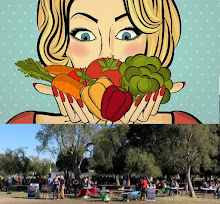Hotei/Budai is not Buddhist but Shinto
"The Legend of Hotei, the Laughing Buddha" (holymtn.com) edited by Wisdom Quarterly
 |
| Hotei (Budai) is a Shinto god |
- The term "Shinto" derives from the combination of two Chinese characters -- shin (神), which means "spirit" (kami, supernatural entities, possibly heavenly ETs coming to this dimension) or "god," and tō (道, tao), which means "way," "road," or "path" [45]. Shintō (神道) is therefore "the Way of the Gods" (or Spirits, the shapeshifting kami at the center of the priestly religion). It was a term already used in the I-Ching or Book of Changes, referring to the divine order of nature [46]. Around the time of the spread of Buddhism in the Han Dynasty (206 BCE–220 CE), the term was used to distinguish indigenous Chinese religions (shamanic or magic-based traditions) from the new imported religion. Ge Hong used it in his Baopuzi as a synonym for Taoism [47]. Shinto is animistic and polytheistic with priests who deal with the unruly shapeshifting monsters/gods known as the kami. The Chinese term 神道 (MC zyin daw) was originally adopted into Japanese as Jindō [48]; this was possibly first used as a Buddhist term to refer to non-Buddhist deities [49] or spirits. More
Hotei is distinguished by his [fat] body, which is of generous proportions with a round belly exposed beneath loose robes. This big jelly belly is a symbol of happiness, luck, and generosity.
On his back he carries a huge linen sack, containing candy, precious things, and gifts of good fortune, including children.
He also holds an uchiwa, a flat fan of Chinese origin used by ancient chieftains as an emblem of authority and wish granting.
Hotei may sit in an old cart drawn by boys, as the Wagon Priest, and can be compared with the Buddhistic Mi-lo-Fo.
Chinese backstory
 |
| I am the big Friendly One. Here's some candy! |
In Chinese Buddhism he is known as Budai, the "Loving or Friendly One." He was a wandering Chan Buddhist monk who lived in the 9th century.
At his death between the years of 901 and 903, he recited a poem that revealed to the world that he was in fact the Bodhisattva Maitreya in disguise.
Maitreya, Chinese Mahayana Buddhists believe, is the Future Buddha, who will return to the world and bring innumerable individuals to realization (bodhi) and salvation (nirvana).
This concept of hope for all those who suffer, combined with Budai’s pleasing (always kind and smiling) human features, made him a most popular Buddhist deity (deva).
 |
| Good Luck Budai honored in Thailand |
According to Chinese legend he carried a sack of candy to give to children. He is sometimes worshiped as a god of good luck and prosperity.
He is always represented as very stout (fat), with breasts and upper abdomen exposed to view. His face has a widely grinning, joyful, or laughing expression, so he is also known loosely as "the Laughing Buddha" even though he is NOT a buddha.
- [EDITOR'S NOTE: Even "Maitreya Buddha" is actually not yet a buddha as his name would suggest but rather a bodhisattva, that is, "a being striving to become a supreme buddha" (samma sam buddha) in the future.]
He stands in the first hall of Buddhist monasteries. Because of his constant good nature, he has become the symbol of philosophical contentment. Source
- Not to be confused with Samantabhadra (Bodhisattva)
The Laughing Buddha Story | Joy of Enlightenment | Zen Buddhism
#zenstory #lifelessons #laughingbuddha #laughingmonk #laughingbuddha
- Legend of Hotei, the Laughing Buddha (holymtn.com); Narrative Dreamscape, Sept. 9, 2023; CC Liu, Dhr. Seven (eds.), Wisdom Quarterly























































































































































































































































No comments:
Post a Comment